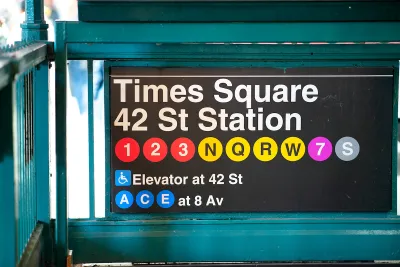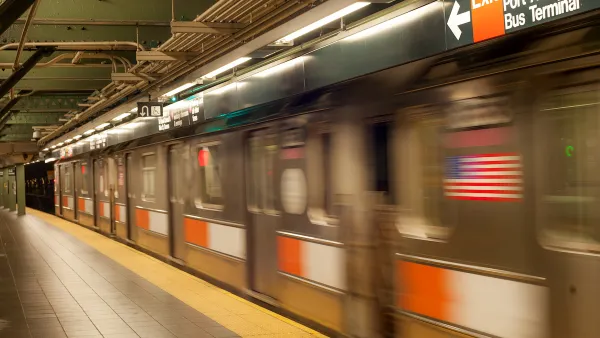The city is lagging on meeting its pledge to improve accessibility across the system.

A report from New York City’s Public Advocate reveals that “New York City’s public transit system is falling far behind other major cities both on timeline and technology needed to be truly, fully accessible,” according to a BK Reader article.
The report finds that under one-third of subway stations are accessible via elevator, with elevator outages common. “The MTA has invested significantly in aesthetic improvements that make stations less accessible, such as by removing benches and replacing them with leaning benches or that are underutilized for accessibility purposes, like using new LED screens to display advertisements instead of closed captioning for announcements.”
At the current rate of improvements, the report adds, New York City’s subway won’t be fully accessible until 2100. The report recommends immediate actions that include: implement efforts started by a 2019 pilot program, “Improve train boarding so that doors align properly with designated boarding areas, and raised infrastructure closes any large gaps between the train and platform,” and “Install wayfinding infrastructure including tactile guideways and boarding areas.” The report also provides near-term and long-term recommendations for making the city’s transit system truly fully accessible.
FULL STORY: MTA Failing to Meet Needs of NYC's Disabled on Public Transit: Report

National Parks Layoffs Will Cause Communities to Lose Billions
Thousands of essential park workers were laid off this week, just before the busy spring break season.

Retro-silient?: America’s First “Eco-burb,” The Woodlands Turns 50
A master-planned community north of Houston offers lessons on green infrastructure and resilient design, but falls short of its founder’s lofty affordability and walkability goals.

Delivering for America Plan Will Downgrade Mail Service in at Least 49.5 Percent of Zip Codes
Republican and Democrat lawmakers criticize the plan for its disproportionate negative impact on rural communities.

Test News Post 1
This is a summary

Test News Headline 46
Test for the image on the front page.

Balancing Bombs and Butterflies: How the National Guard Protects a Rare Species
The National Guard at Fort Indiantown Gap uses GIS technology and land management strategies to balance military training with conservation efforts, ensuring the survival of the rare eastern regal fritillary butterfly.
Urban Design for Planners 1: Software Tools
This six-course series explores essential urban design concepts using open source software and equips planners with the tools they need to participate fully in the urban design process.
Planning for Universal Design
Learn the tools for implementing Universal Design in planning regulations.
EMC Planning Group, Inc.
Planetizen
Planetizen
Mpact (formerly Rail~Volution)
Great Falls Development Authority, Inc.
HUDs Office of Policy Development and Research
NYU Wagner Graduate School of Public Service




























